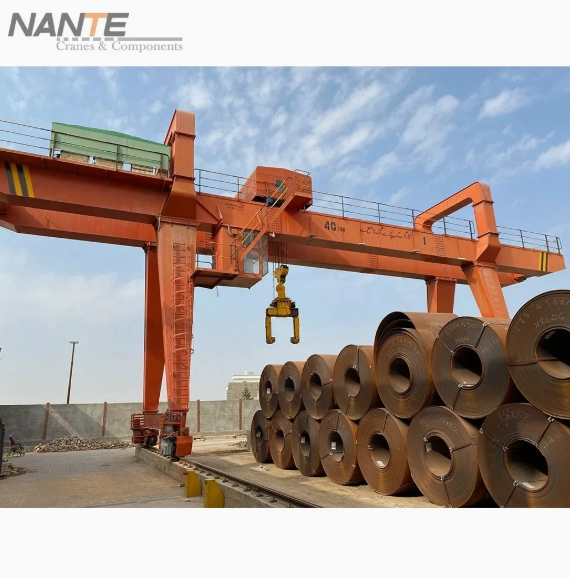European vs. Chinese Crane Standards: What Buyers Should Know
European vs. Chinese Crane Standards: What Buyers Should Know
Date: 2025-10-30 Share:
In today’s global industrial landscape, crane safety standards play a pivotal role in preventing accidents, ensuring equipment longevity, and maintaining operational efficiency. Buyers often grapple with navigating European standards like EN and FEM versus Chinese GB/T frameworks, alongside American benchmarks such as CMAA. Understanding these differences empowers buyers to achieve compliance, minimize downtime, and optimize costs without compromising performance.
Understanding Crane Safety Standards: A Global Overview
Crane safety standards form the backbone of reliable lifting operations worldwide, governing design, manufacturing, operation, and maintenance to mitigate risks like structural failures or overloads. These frameworks, including ISO, EN, FEM, CMAA, and GB/T, standardize load classifications, material selections, and inspection protocols to prevent accidents.
Historically, FEM emerged in the 1980s from European associations to harmonize practices amid growing automation, while CMAA traces back to 1927 in the U.S., evolving from early hoist regulations. Compliance ensures insurance validity, legal adherence, and efficiency gains, such as reduced energy consumption in modern designs.
Key standards include ISO 4301 for crane classifications based on duty cycles and ISO 9927 for inspections. EN 13001 outlines general design principles, emphasizing fatigue resistance.
| Standard | Origin | Key Focus | Example Application |
| ISO 4301 | International | Load and duty classifications (A1–D4) | Universal crane grouping |
| EN 13001 | Europe | Crane design, safety factors, fatigue | EU-manufactured overhead cranes |
| FEM 1.001 | Europe | Classification rules (1Am–9m) | Precision manufacturing environments |
| CMAA Spec 70/74 | USA | Service classes (A–F) for EOT cranes | Heavy industrial U.S. plants |
| GB/T 3811 | China | Design rules, tolerances | Cost-effective domestic production |
These build the ground for area changes. Cranes handle real stresses. They push new ideas too.
European Standards: EN and FEM Explained
European rules, mostly EN and FEM, stress matched safety under the EU Machinery Directive 2006/42/EC. The EN 13001 set details crane design. It uses chance-based ways for load mixes. It also figures wear life with Palmgren-Miner rules. For bridge cranes, EN 15011 sets bend limits — one example is L/600 for side beams. This cuts shakes in exact jobs.
FEM 1.001 groups cranes into 10 steps. Light, rare use gets 1Am. Hard, non-stop cycles earn 9m. Groups depend on load range and work times. This allows light, power-saving builds. Girders get better shapes. Firm welding follows EN ISO 3834. Quality levels reach B for key links. CE marking proves fit for EU sales.
These rules shine in high-tech fields like car making. Exact parts cut power use by up to 20%. Modular bits and speed-changing drives help.
American Standards: CMAA and ASME Insights
CMAA Specifications 70 (top-running) and 74 (under-running) cover electric overhead traveling (EOT) cranes. They set six service groups. Class A means standby. B fits light work. C handles moderate tasks, like shops with 5–10 lifts per hour. D suits heavy jobs. E covers severe ones. F fits non-stop. Groups look at work cycles, starts and stops, and places like rusty spots.
ASME B30.2 adds to this for overhead and gantry cranes. It demands daily looks, full yearly checks, and load tests at 125% capacity. Operator skills match OSHA 1910.179. It stresses safe rigging and anti-two-block tools.
CMAA stresses strong builds. It allows more bend, like L/600, for tough uses. This ensures long life in steel mills or ports with many heavy loads.
Chinese Standards: GB/T Framework and Alignment
China’s GB/T rules, like GB/T 3811 for design and GB/T 10183 for build fits, aim at useful, low-cost answers. They suit fast industry growth. GB/T 6067 covers safe running. It includes quick stops and weight limits.
These mix ISO parts. GB/T 10183 matches ISO 12488 for wheel and rail fits. They allow bend room up to L/500. Wear checks stay flexible for cheap making. Guards against rust, like special coatings, get focus.
For sales abroad, makers adjust with GB 50661 welding codes and GB/T 16895 electrical safety. They often reach CE or CMAA levels. This links home trust with world needs. GB/T cranes compete well in growing markets.
EN vs. CMAA Cranes: Key Differences for Buyers
EN vs. CMAA cranes differ deep in ideas. EN/FEM stresses wear stop and savings for European exact work. CMAA/ASME targets lasting run for American hard use.
| Aspect | EN/FEM | CMAA/ASME |
| Duty Classes | 10 levels (1Am–9m) | 6 classes (A–F) |
| Deflection Limits | Stricter (L/500–L/1000) | L/600 typical |
| Fatigue Approach | Detailed calculations | Duty-based |
| Energy Focus | High (lightweight) | Moderate |
| Cost Implication | Higher upfront | Lower initial, robust |
EN cranes fit EU sales needing low power and exact moves, like auto storage. CMAA suits North American sites with many starts and stops. For world work, pick models that meet both. This skips fixes. Check with papers.
Structural and Design Variations
In structure, EN focuses on wear-based bend. This extends life under repeat loads. It uses computer checks for best girders. Welding meets EN ISO 5817 at quality level B+. This supports modular, light builds. Material use drops by 15%.
CMAA allows bend by load for toughness. AWS D14.1 welding ensures strength in non-stop service. Take EN girders for wind turbine builds — they cut sway. CMAA ones for mining stress hit resistance.
Safety and Compliance Implications
EN’s EN ISO 12100 demands full risk checks. It covers dangers from start to end. CMAA adds wind loads in Spec 70 and run steps.
Gaps risk fix costs. One case: add CE for EN in non-EU spots. Prove with CE for EN, OSHA for CMAA. This ensures world crane fit and insurance.
International Crane Compliance: Navigating Global Requirements
International crane fit matches through ISO rules like ISO 12482 for steady and ISO 9927 for checks. It links EN, CMAA, and GB/T. Issues include changing GB/T cranes for EN with outside CE marks.
Buyer list:
Check load ranges and settings.
Prove ISO 23814-skilled checkers.
Plan reviews by local rules.
Gains: 30% less stop time, movable gear, better resale.
Challenges in Cross-Border Compliance
Traps: EN’s yearly full checks against CMAA’s use-based, like monthly for heavy.
Fixes: TÜV reviews for EN, CSA for CMAA matches.
Best Practices for Achieving Compliance
Begin with work cycle checks. Talk to experts. Test loads with programs. Record by FEM 1.007. Train workers.
How Nante Crane Meets Global Safety Standards
Nante Crane stands out in crane safety rules with smart builds. They meet EN, FEM, CMAA, and ISO. Overhead cranes use FEM groups for power cuts. They have CMAA ratings for strength. EN 13001 handles wear checks. Modular parts include weight guards and low wheel push. This ensures world crane fit.
Cases: EN-fit cranes for green power. CMAA-matched for steel mills.
About Nante Crane: Company and Products Introduction
Founded in Shaoxing, China, Nante Crane serves 30+ industries in 50+ countries via 200+ partners and 5000+ customers. Specializing in overhead traveling cranes, gantry cranes, hoists, and trolleys, products range 1-500 tons with energy-efficient, customizable features for logistics, manufacturing, and mining. Global solutions prioritize safety and innovation in shipbuilding to aviation.
Elevate Your Operations with Compliant Cranes
Ready for EN vs CMAA cranes with full international crane compliance? Contact Nante Crane for free consultations on tailored solutions. Visit https://www.nantecrane.com/ to explore, quote, or demo. Secure safety now!
FAQ: Common Questions on Crane Safety Standards
Q1: What are the main differences between EN and CMAA cranes?
A: EN targets European exact and wear life, with tighter bends. CMAA stresses U.S. hard cycles and run strength. Both keep safety. They fit different spots—EN for savings, CMAA for lasting.
Q2: How does international crane compliance benefit buyers?
A: It cuts risks, eases sales abroad, and lowers future costs. Standard checks and promises help. ISO match allows world move.
Q3: Can Chinese cranes meet EN or CMAA standards?
A: Yes, through changes like CE marks for EN or group matches for CMAA. Exports show GB/T and ISO mixes.
Q4: What certifications should I look for in crane purchases?
A: Focus on CE for EN, CMAA Spec fit, ISO 9001 for quality, and OSHA match. These prove crane safety rules.
Q5: How often should cranes be inspected under these standards?
A: EN/FEM suggests yearly full looks. CMAA/ASME links to use, like monthly for Class D. Always match local rules for world crane fit.





